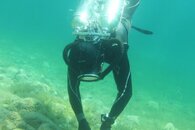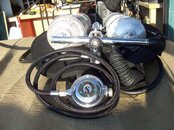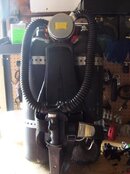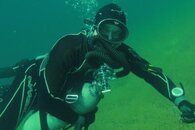Mustard Dave
Contributor
I also dive solo on occasion. Until a couple of years ago, ninety percent of my diving was solo.
So that means solo diving without a redundant gas source is safe?
Welcome to ScubaBoard, the world's largest scuba diving community. Registration is not required to read the forums, but we encourage you to join. Joining has its benefits and enables you to participate in the discussions.
Benefits of registering include
I also dive solo on occasion. Until a couple of years ago, ninety percent of my diving was solo.
So that means solo diving without a redundant gas source is safe?
This is not the solo forum. A wide opinion exists within the solo community as to what constitutes safe enough. The surface is my redundancy above 60 feet plus or minus. I have been solo diving for nearly 45 years. What works for me I never said would work for everybody or anybody other than me. I am sure Paladin is of similar material, without speaking for him.
N
I don't think a 6 cu ft tank is enough to ascend safely from 100 ft.




There is someone trying to sell a set of double 46s here.
http://www.scubaboard.com/forums/cl...82-faber-oms-twin-manifolded-46-lp-tanks.html
I did the LP 50's thing 30 years ago for commercial charter boat dives. They were fun to dive and I had free fills. But the overhead of dealing with doubles was not worthwhile on shore dives. Just a simple run of 2 shore dives required a run to the dive shop and loosing my parking spot. They were heavy hiking up the stairs after the dive and were high maintenance.
The wide spread availability of HP steel tanks now days makes for a cheaper, lighter, simpler system and swapping tanks is fast.
The OP is solo diving, so in his case, redundancy is vital.
Redundancy is important, so I'd like an isolater valve. Thanks to a post I read by Jim Lapenta, I use a mirror to do bubble checks. Assuming I head this direction, I would no doubt get some training or mentor-ship to learn the valve drills and whatever else is required.
This is not the solo forum. A wide opinion exists within the solo community as to what constitutes safe enough. The surface is my redundancy above 60 feet plus or minus. I have been solo diving for nearly 45 years. What works for me I never said would work for everybody or anybody other than me. I am sure Paladin is of similar material, without speaking for him.
N

